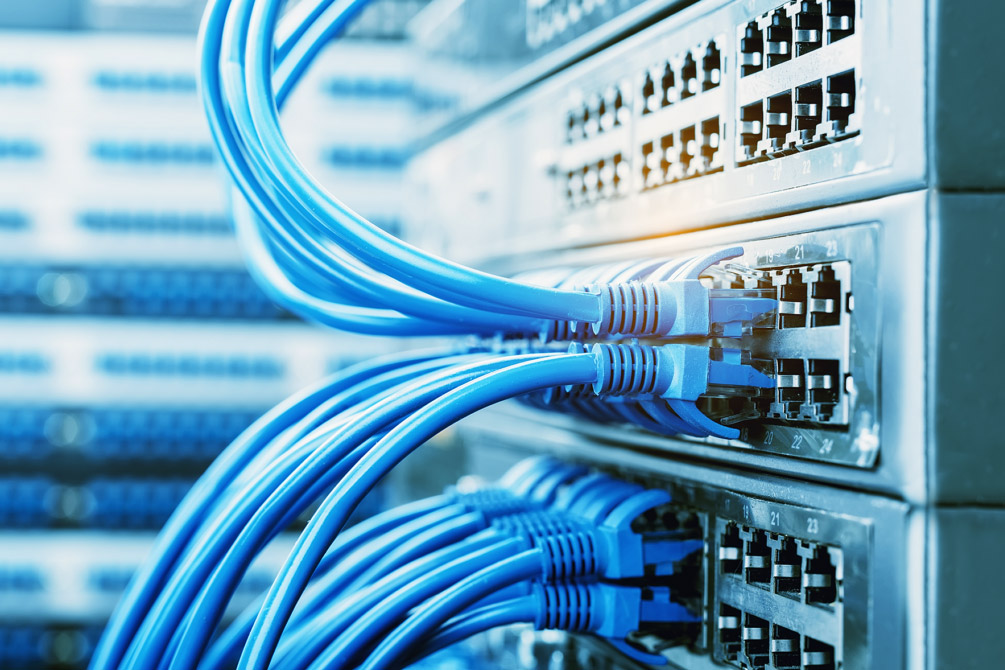
EZELINK reliable and high-quality Guest wifi solutions equipment with extensive research & development in wireless technologies delivering successful projects in every industry irrespective of their size and complexity. Our specialists have the appropriate education, knowledge and experience, so you can rely on us.
We are beginning to make requirements for the devices, Wifi6 wireless solutions be it a laptop, tablet computer or any other specialized equipment. That is why more and more often there is a need for modernization or implementation of wireless networks, which can exist in parallel or completely replace the wired network.
A full-fledged transition to a wireless network has become possible thanks to the EZELINK Turnkey Wi-Fi Solutions, which are now fully capable of meeting the requirements for corporate, commercial or industrial networks
Aman Khan, Projects Head
Wireless Technologies
Current stage of development of wireless technologies allows using Outdoor wifi solutions and Wi-Fi networks to solve almost any problem of building an access network, be it an office, hotel, shopping center or cottage village. When considering the implementation of an external (street) Wi-Fi network project, it is worth paying attention to the fact that in the absence of a large demand for Wi-Fi at the moment, it is enough to introduce one or more access points instead of covering the entire facility with wireless coverage. And then, as requests come in, gradually expand your business. This method of developing a wireless network will reduce the likelihood of costs and the size of the initial investment.
Wi-Fi Solutions for Small Businesses

Small business solutions are simple, cost effective and fast to install. Wireless access in such solutions is provided for access to the internal network and the Internet. Support for voice and video communications, as well as streaming data, is significantly limited. Typically, the number of access points in these solutions does not exceed 4-5, with about 6-8 clients connected to each. Such configurations do not require the use of hardware controllers; all access points are configured separately. To manage the network, it is necessary to carry out identical manipulations with each point separately, which requires higher qualifications of IT personnel and reduces the functionality of the system as a whole.
Corporate WiFi Solutions
In installations of this level, hardware controllers of wireless Wi-Fi networks are always used. Solutions of this class assume the use of up to 3000 access points, and support the simultaneous operation of up to 30,000 client devices. When using specialized radio sensors and access points with the function of monitoring the radio broadcast, a system for determining the location of subscribers, sources of interference and intruders posing a threat to the security of the network can be implemented. At the same time, the system has the ability to self-repair: in the event of interference, a dynamic selection of the channel least affected by the interference occurs. Fail-over mechanisms are implemented. If an access point fails, its clients are intercepted by neighboring access points without losing the connection.
Hotels, Restaurants and Cafes WiFi

The specificity of Hotel wifi solution for hotels, restaurants involves the use of a wireless network for Internet access, e-mail, VoIP telephony and video communication. Such schemes do not require the implementation of client roaming functions without breaking the connection, since the main traffic flow comes from fixed points. A software controller can be used to configure and monitor access points. To ensure the security of guests’ data and to facilitate the configuration of client devices, WPA2 password-based encryption is used, since this excludes the possibility of eavesdropping on the air and intercepting confidential information. For the convenience of administration and sale of Internet access services via Wi-Fi, you can provide a Personal Account for each mobile subscriber.
Education WiFi

In addition to commercial use, the trend of deploying Wi-Fi networks in educational institutions is gaining momentum. In schools and universities, wireless access from tablet PCs completely translates the entire educational process into an interactive environment, which significantly improves the quality and level of education. To attend lectures, it is not necessary to be physically in the classroom; the issue of access to information carriers is being resolved: paper manuals, libraries, timetables. Interaction between teacher and student becomes available anywhere in the world.
Healthcare WiFi
Using Cloud managed wifi solutions in medicine means instant access to the most up-to-date information from the Internet, any reference manuals, the ability to write prescriptions with one touch of the screen, storage and backup of all patient records on servers, etc.
Wireless Solutions For Telecom Operators

The main problem when deploying a cellular network is the limited bandwidth of each cell. All the speed available to the base station is divided between the subscribers. To increase the speed, operators are trying to reduce the number of subscribers, reducing the coverage area of each cell. This entails unreasonably high costs for increasing the number of expensive base stations to cover the same area. In this case, Wi-Fi is used. Cheap Wi-Fi hotspots provide Internet access exactly where you need it most. Subscribers’ voice calls are made through the existing GSM and 3G networks. There is no need to deploy additional 3G base stations. In another scenario, Wi-Fi is deployed in conjunction with short-range cells (pico and femto cells) in places with the highest subscriber density, to reduce the load on cellular base stations.
In addition, the vast majority of mobile devices are equipped with Wi-Fi, even entry-level tablets and e-readers that do not have any other wireless communications. All these devices can be connected via Wi-Fi to the operator’s networks, expanding the subscriber base and increasing the economic feasibility of deploying such networks. The same situation is observed in 4G networks (WiMAX / LTE). These technologies are often used as a backbone to deliver traffic to specific points. This traffic is then distributed locally over the Wi-Fi network. This process is called offload. At the same time, the subscriber of the cellular network continues to receive voice calls and SMS through the cellular network, and all Internet traffic goes through Wi-Fi. At the same time, Internet telephony and video conferencing services such as Skype and Lync remain available. Billing for Wi-Fi at local points can be organized in any available way: through payment terminals, paid SMS with temporary passwords, etc.
BYOD (Bring Your Own Device)
The BYOD concept is a security policy under which company employees are allowed to bring their own portable devices (laptops, tablets, communicators) to the workplace and use these devices to access the company’s privileged data and services. The term is also used to describe the same practice in educational institutions where students use personal devices for educational purposes. With this approach, all corporate security policies are implemented, the local network remains protected from possible threats. It is more convenient for staff and students to work from their personal devices, and this practice has become a general trend. Our task is to design and configure a Wi-Fi network in accordance with the modern needs of the Customer.
High Level of Security
Wi-Fi uses sophisticated encryption methods that cannot be bypassed or “broken” with modern computing power. Access is provided both by password and by a security certificate. Logging into a wireless Wi-Fi network is as secure as connecting to a corporate switch port.
WiFi Scalability
Not every implementation requires further scalability (e.g. hotels, restaurants, cafes). But if you are faced with the task of building a scalable wireless network, then the main point is the choice of the manufacturer and the line of access points. Not all access points scale from a standalone access point to a cloud of lightweight access points managed by a Wi-Fi controller. In scalable wireless networks, the first step is to install and configure multiple access points. The development of the company and the increase in needs will not entail a complete replacement of equipment. It will only be necessary to update the software (firmware) on the existing access points and add wireless components.
WiFi Seamless Roaming
To implement voice (VoIP) or video communication, the corporate infrastructure uses fast roaming mechanisms (analogous to handover in cellular networks). The Wi-Fi wireless network controller transfers service to mobile subscribers as they move from one access point to another without delays or packet loss.
Automatic control and management of radio resources of the system. The WLAN controller performs dynamic redistribution of frequency channels and transmitter powers of access points according to specified algorithms. This reduces the level of interference created by neighboring points. Mechanisms of redundancy of access points are implemented – if one of the devices fails, the neighboring points increase the power and “intercept” clients, the service does not suffer.
Protection of radio air from interference and malicious clients. Standard Wi-Fi wireless LAN equipment is not capable of detecting interference from non-IEEE 802.11 devices. The task of monitoring the radio broadcast falls on access points with an additional spectrum analysis function, or specialized radio sensors that complement the infrastructure of a wireless Wi-Fi network. In some cases, this role is assumed by access points that are switched to analysis mode and do not serve clients. After detecting interference, the system rebuilds the channel plan of the access points. Moreover, so that channels adjacent to interference are assigned to access points that are as distant as possible from their sources. In addition, the system allows you to record attempts to “jam” the network and block malicious attempts to guess the access password.
Determining the location of devices. Dedicated services running on the Wi-Fi controller allow you to determine the location of emitters based on the signal strength received by multiple access points. These include both client gadgets and computers, and sources of interference (microwave ovens, cameras), malicious devices (“jammers”, access points – twins). The system determines their location and displays them on the floor plan. There are several options for the implementation of such systems, their accuracy is about 3-5 meters. Location data can be used to collect statistics, as well as to prohibit the use of mobile devices in certain areas on the building map, for example, meeting rooms or bathrooms.
Consistently high access speed. To ensure high speeds of access to the network, it is necessary to fulfill a number of factors, the main of which remains the competent design of the WLAN. The job of the surveyor or point placement engineer is to provide continuous coverage throughout the building. In this case, the system must be configured in such a way as not to accept connections from clients outside of a stable connection. In this case, the network will not be overloaded with re-sending packets, and all clients will be provided with a guaranteed connection speed, regardless of the load of each.
Increased user loyalty. In the service sector (hotels, hotels, hostels, restaurants, cafes, bars, business centers, shopping centers and malls, etc.), the provision of free Wi-Fi Internet access services significantly affects the client’s attitude to the service provider and increases “stardom”. For some potential customers, being able to access the internet is critical. In large malls, shoppers receive additional information and product reviews online and are more likely to shop. In addition, on the basis of free access to a wireless Wi-Fi network, an interactive product catalog can be implemented on the web portal platform, as well as a shopping cart, contextual advertising, an interactive shopping center scheme, and other services.
WiFi Web Authentication
Popular solution for hotels, airport terminals, shopping centers. Its essence is that a mobile subscriber connects to a Wi-Fi network without a password, opens an Internet browser and enters an arbitrary URL. The authorization system automatically redirects him to the authentication page, where he can enter a username and password. After successful input, the user gains access to the Internet. Web authentication systems are also popular in corporate wireless Wi-Fi networks, where data from Active Directory are used as login and password.
Guest portal for hot spots. Often in places with open access, before getting on the Internet, users go to the service provider’s page (restaurant, store, mobile operator, etc.). From where, after viewing the mandatory advertisements, the client is redirected to the Internet. This approach is similar to web authentication, but does not require a username / password pair. The portal is a web page on the basis of which any web services, statistics collection services, connection duration, etc. can be implemented. It should be noted that advertising covers the costs of clients’ Internet access, which, among other things, may be limited in speed / time / volume, etc.
WiFi Quality of Service (QoS)
The Quality of Service (QoS) mechanism classifies traffic by type and importance, sending high priority data packets first. Without this mechanism, it is impossible to simultaneously pass large amounts of simple data and voice communication (VoIP – Voiceover Internet Protocol) or video conferencing over the network. In the absence of this technology, the connection “croaks”, is interrupted, the image of the interlocutor is fragmented and covered with “squares”.
Designing and installing Wi-Fi wireless networks is a complex engineering task, in the solution of which specialists from several directions take part. In order for the network to meet all customer requirements and provide a reliable service, at all stages of implementation, the requirements for the placement of access points, antenna orientation, installation of SCS for powering access points via PoE and connections with switches are strictly met. Equipment tuning done by engineers who have knowledge of the technique and physics of radio wave propagation, as well as have experience with the equipment installation. Otherwise, you may be sold a large amount of equipment that individually meets all the requirements, but installed in such a way that it is a “pile” of expensive non-functioning “hardware”. Our specialists have the appropriate education, knowledge and experience, and are also certified for industry leading standards, so you can rely on us. This is evidenced by EZELINK, successful projects and the confirmed qualifications of our engineers.









